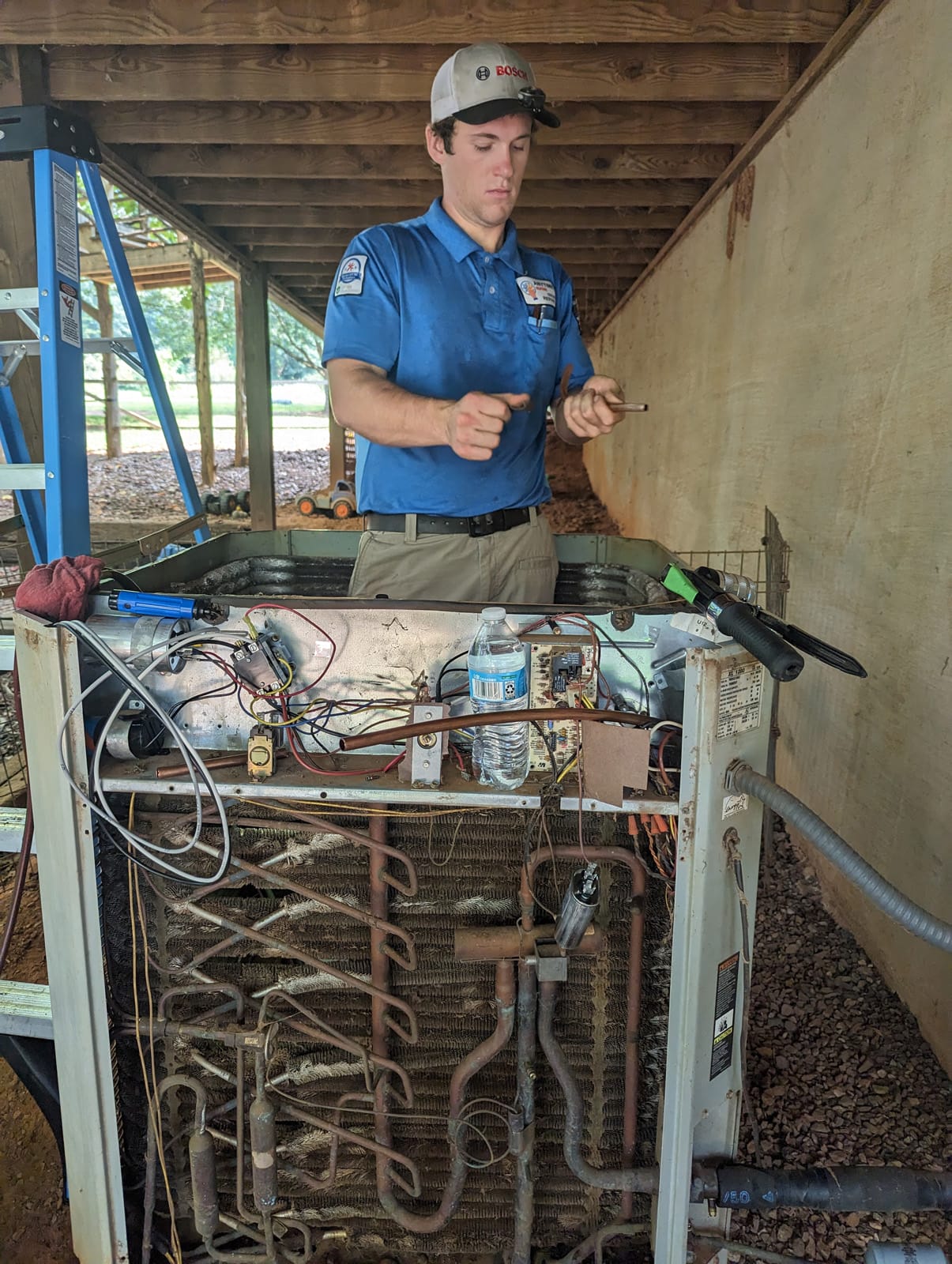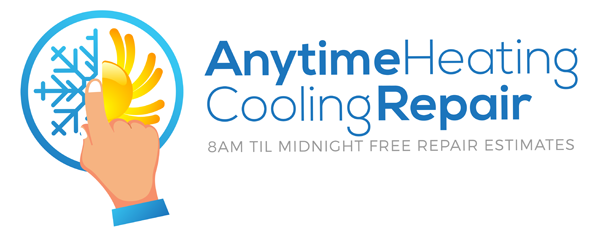
Peeling back the layers of an HVAC system can feel like unlocking a mystery. Understanding HVAC System Components is essential, whether you’re a homeowner looking to make informed decisions or someone eyeing a career in this field. This manual delves into the intricate machinery and intelligent devices that maintain our indoor climates, ranging from thermal transfer units to programmable climate controllers.
Delving into the synergy of HVAC parts, you’ll grasp how they collaboratively adjust climate and purify the air where you dwell. Moreover, we’ll explore the significance of routine upkeep, which is not merely beneficial but essential for extending durability and enhancing functionality. Ready to demystify your HVAC system? Let’s get started.
You might think a heat exchanger belongs in the realm of futuristic films, yet it’s an essential element ensuring your dwelling remains cozy and comfortable. This component uses air temperature alloys to efficiently transfer heat without mixing the two environments. Imagine it as a super-efficient postal service that delivers warm or cool air exactly where you need it.
In gas furnaces, for example, the heat exchanger protects you from breathing in combustion gases directly by heating fresh air that circulates into your living areas. This system’s knack for adjusting warmth or chill to your liking quietly champions the cause of cozy indoor spaces.
Think of the blower motor as the heart of your HVAC system—it keeps everything moving. The component fine-tunes the breeze flow with adjustable speeds, adeptly balancing the needs for warmth and chill while optimizing both energy use and indoor coziness. A well-functioning blower motor ensures that every corner of your room reaches your preset temperature without overworking itself.
The condenser coil is essentially where all unwanted warmth goes to get booted out from inside spaces during those hot summer days; think bouncer at a club keeping things cool inside by sending heated elements packing outside through outdoor units pumps liquid refrigerant through its coils converting into gas form which releases excess energy (heat) into outdoor air—keeping indoors chill.
If condenser coils are about getting rid of unwanted warm vibes then evaporator coils bring their A-game when absorbing them first place thus helping drop temperatures indoors dramatically they do so letting refrigerants absorb thermal energy present before passing back outdoors cycle continues until set climate conditions met—a real MVP during scorching summers.
Last but not least we’ve got our refrigerant lines: highways transporting coolant between various components ensuring smooth operation throughout entire cooling/heating cycles These pipelines may seem small yet play monumental role overall effectiveness any given unit malfunction here could lead significant issues hence importance regular maintenance checks ensure they’re always good condition ready perform duty whenever called upon.
The journey of thermostat tech has evolved remarkably, shifting from the need for manual tweaking to embracing the age of intelligent thermostats and customizable settings. This leap in technological advancements means not just convenience but also substantial savings on energy costs.
Smart thermostats learn your habits over time, adjusting the temperature based on when you’re home or away. Harnessing this wisdom ensures your environment is optimally warmed or cooled, seamlessly merging efficiency with coziness. For those intrigued by how these devices can save money while being eco-friendly, exploring energy-saving tips provided by the Department of Energy could be enlightening.
Programmable thermostat models let users set temperature preferences for different times of the day or week. Imagine setting a lower temperature during winter nights or higher during summer days when no one is home; this simple adjustment can lead to significant reductions in utility bills. Diving into the world of thermostat advancements, it becomes evident that grasping this tech is crucial for enhancing our heating and cooling systems’ efficiency while also cutting down on energy costs.
Booking regular HVAC service appointments is like giving your car a tune-up; it’s essential to keeping everything running smoothly. Regular upkeep of your HVAC not only ensures it functions correctly but also helps in reducing energy expenses and averting expensive fixes later on.
Experts recommend scheduling maintenance at least once a year, ideally in spring for air conditioning systems and fall for heating units. Optimizing the schedule for maintenance primes your system to perform flawlessly during its most demanding times.
In these evaluations, experts scrutinize essential elements like blower motors, condenser coils, and coolant pathways, alternating their focus based on the system’s specific needs. They’ll clean parts that need it and identify any potential issues before they become major problems. To keep your heating, ventilation, and air conditioning (HVAC) system running smoothly, dive into this detailed guide provided by the Department of Energy.
The world of HVAC systems is as varied as the weather patterns they’re designed to combat. From split systems that separate components between inside and outside, to duct-free models offering a solution for spaces where traditional ducted systems won’t fit, understanding these differences can be key in choosing the right system for your home or business.
A staple in both residential and commercial properties, split HVAC systems feature two main parts: an outdoor unit housing the condenser and compressor, and an indoor unit containing the evaporator coil. By exchanging warm air from inside with the cooler outdoor atmosphere, this configuration offers a cost-efficient and effective solution for temperature regulation, favored for its equilibrium of affordability and functionality.
This innovative system takes energy efficiency up a notch by combining a gas furnace with an electric heat pump. It intelligently switches between gas power (for colder temperatures) and electricity (for milder weather), optimizing comfort while keeping energy costs down.
Duct-free options offer flexibility for older buildings or additions where extending existing ductwork isn’t feasible. Wall or ceiling-mounted units enable targeted cooling or warming of rooms, bypassing the need for complex fitting tasks.
Ideal for homes with limited space for large setups, packaged systems consolidate all components into one outdoor unit typically located on the roof or near the foundation. Despite their compact size, they deliver powerful heating and cooling capabilities perfect for smaller footprints.
Leaks of carbon monoxide from heating units are far from being merely bothersome; they pose a grave threat to well-being, capable of inducing symptoms like dizziness and severe headaches, or at their worst, proving fatal. A notorious assassin, this invisible gas stealthily compromises the sanctity of our indoor spaces without a whisper or shadow to betray its presence.
To combat this threat, high-efficiency gas furnaces are equipped with additional combustion chambers designed specifically to capture carbon monoxide and any unburned fuel before they can escape into your living areas. Employing advanced HVAC solutions highlights how crucial current tech is in protecting our dwellings from unseen threats.
Maintaining good condition of your heating system through regular checks can significantly reduce the risk of carbon monoxide poisoning. A professional technician from Anytime Heating Cooling Repair will not only ensure that your furnace operates efficiently but also verify the integrity of its components—like the heat exchanger—to prevent CO leaks.
Understanding HVAC System Components is the first step toward ensuring your indoor comfort and air quality. From heat exchangers to smart thermostats, each part plays a crucial role in maintaining an ideal indoor environment.
Don’t forget, consistent upkeep ensures your system operates without a hitch. Addressing issues is one thing, but the real magic lies in stopping them before they start.
Moreover, in the realm of reducing energy consumption, never underestimate the impact that programmable devices can have. These devices revolutionize how we regulate warmth and slash expenses, making a significant impact.
Last but not least, always be aware of carbon monoxide risks with heating systems. Safety measures can save lives.
Dive into these insights; let them guide you through understanding HVAC better. Here’s to comfortable living spaces!

2901 N Main Ave
Newton, NC 28658
Mon - Sun Open 24 Hours
No Overtime Charges
Call to Schedule Service
(828) 838-0973